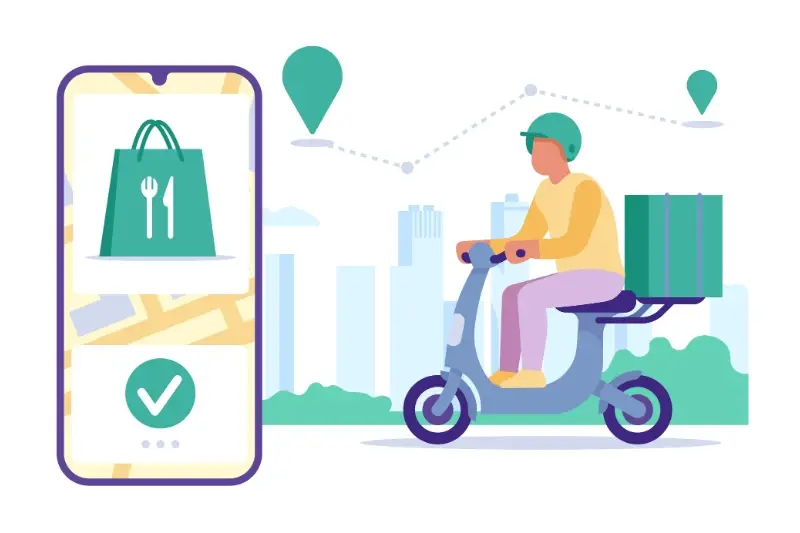Why 80% Of Business Apps Fail And How To Be In The 20%
You spend months developing what you think is the perfect business app, invest thousands of pounds, launch with high hopes—and then watch it disappear into the digital void. Sound familiar? You're not alone. The harsh reality is that 8 out of every 10 business apps fail within their first year, leaving founders scratching their heads and wondering where it all went wrong.
But here's the thing that really gets me—most of these failures aren't down to bad luck or market timing. They're completely avoidable mistakes that happen over and over again. After building apps for everyone from scrappy startups to major brands, I've seen the same patterns repeat themselves like a broken record. The apps that crash and burn almost always make the same fundamental errors, whilst the ones that thrive follow surprisingly similar playbooks.
Success in the app world isn't about having the most revolutionary idea—it's about avoiding the basic mistakes that kill most apps before they even get started
The good news? Understanding why business apps fail is your ticket to joining that exclusive 20% club. We're about to break down exactly what separates the winners from the casualties, and more importantly, how you can stack the odds in your favour from day one.
The Shocking Numbers Behind Business App Failures
Let me share some numbers that might surprise you. The app stores are absolutely flooded with millions of apps, but here's the kicker—most of them are complete disasters from a business perspective. We're talking about failure rates that would make any seasoned developer's stomach turn.
Studies consistently show that around 80% of business apps fail within their first year. That's not a typo. Eight out of ten apps that companies pour their time, money, and hopes into simply don't make it. But it gets worse—of the apps that do survive past twelve months, many are barely scraping by with tiny user bases and practically no revenue.
What Does App Failure Actually Look Like?
When I say "failure," I'm not just talking about apps that get pulled from the stores. Most failed apps are still technically available for download, but they're essentially ghost towns. Here's what real app failure looks like:
- Less than 1,000 downloads after six months
- User retention rates below 10% after one week
- Revenue that doesn't cover basic maintenance costs
- App store ratings consistently below 3 stars
- No organic growth or word-of-mouth recommendations
The harsh reality is that building an app has become relatively easy—anyone can do it these days. But building a successful app that people actually want to use and pay for? That's where the real challenge lies, and frankly, where most businesses get it spectacularly wrong.
Poor Planning Sets Apps Up To Fail From Day One
I've seen countless business apps crash and burn before they even reach the app store—and nine times out of ten, it comes down to one thing: rubbish planning. People get excited about their brilliant idea and want to jump straight into building. I get it, the excitement is real! But skipping the planning phase is like building a house without blueprints.
The apps that fail usually start with someone saying "wouldn't it be cool if..." without thinking about who actually wants this thing. They haven't worked out their target audience, they don't know what problem they're solving, and they definitely haven't figured out how they'll make money. I've watched businesses spend £50,000+ on apps that nobody uses because they never asked themselves the hard questions upfront.
What Proper Planning Actually Looks Like
Successful business apps start with proper research. Who are your users? What do they need? How will you reach them? What's your budget—not just for building, but for marketing and updates too? The companies that answer these questions before writing a single line of code are the ones that end up in that successful 20%.
Before you build anything, write down exactly what problem your app solves and for whom. If you can't explain it in one sentence, you're not ready to start development.
Building Apps Without Understanding Your Users
Here's something I see all the time—business owners who think they know exactly what their customers want without actually asking them. They spend months building an app based on assumptions, only to discover nobody uses it the way they expected. It's like buying someone a birthday present without knowing what they like; you might get lucky, but probably won't.
Who Are You Actually Building For?
I once worked with a restaurant chain that wanted an app for "young people who eat out a lot." That's not a user—that's a guess! We had to dig deeper. Are we talking about university students on tight budgets or young professionals with disposable income? Do they order takeaway during lunch breaks or plan evening meals with friends? The answers completely change what features matter most.
User research isn't just fancy surveys and focus groups. Sometimes it's as simple as spending an afternoon watching how people actually behave in your business. I've seen shop owners discover that customers were using their app's search function in completely unexpected ways—turning a "failed" feature into their most popular one just by understanding the real behaviour.
The Cost of Getting It Wrong
Building the wrong thing isn't just disappointing—it's expensive. Every feature you build for imaginary users is money down the drain. Worse, it clutters your app with stuff real users don't want, making their experience more confusing and frustrating.
Technical Problems That Kill Business Apps
I've seen brilliant app ideas crumble because of technical issues that could have been avoided. Poor performance is the biggest killer—apps that take forever to load or crash constantly will lose users faster than you can say "uninstall". Nobody's got time to wait around for a sluggish app when there are dozens of alternatives just a tap away.
Security problems are another massive headache. Data breaches don't just cost money; they destroy trust completely. Business apps require different security considerations than consumer apps, and one security incident can torpedo years of hard work building your reputation.
Server Crashes and Scalability Issues
Then there's the scalability nightmare. Apps that work fine with a hundred users often break spectacularly when thousands start using them simultaneously. I've watched apps go viral only to crash under their own success—talk about a missed opportunity!
The best app idea in the world means nothing if the technology can't support it reliably
Battery drain is sneaky but deadly. Apps that constantly run GPS tracking or sync data in the background will get deleted the moment users notice their phone dying by lunchtime. Smart technical planning from day one prevents these business app failure rates from claiming another victim.
Marketing Mistakes That Doom Apps Before They Start
Here's something that might surprise you—most business apps fail not because they're poorly built, but because nobody knows they exist. I've watched countless brilliant apps disappear into the void simply because their creators thought "if we build it, they will come." Spoiler alert: they won't.
The biggest mistake I see is launching without any marketing plan whatsoever. People spend months perfecting their app, then throw it onto the App Store expecting magic to happen. The App Store has millions of apps; yours isn't going to get discovered by accident. You need a proper launch strategy that starts weeks before your app goes live—not after.
The Most Common Marketing Blunders
- Waiting until after launch to start marketing
- Targeting everyone instead of a specific audience
- Ignoring App Store optimisation completely
- Not collecting email addresses during development
- Assuming social media posts are enough
- Setting unrealistic expectations for overnight success
Another classic error is trying to target everyone. When you market to everyone, you're really marketing to no one. Your app needs a clear audience—and that audience needs to know exactly why they should care about your solution over the dozens of alternatives already available.
Learning From Apps That Actually Succeed
Looking at successful business apps, there's one thing they all have in common—they solve a real problem that people actually have. Take Slack, for instance. Before it came along, team communication was a mess of endless email chains and missed messages. They didn't try to reinvent the wheel; they just made it work better.
What separates winning apps from the ones that crash and burn? They start small and focused. WhatsApp began as a simple status update app before becoming the messaging giant we know today. The founders didn't try to build everything at once—they found one thing their users loved and made it brilliant.
The Pattern That Works
Every app that makes it into that golden 20% follows the same playbook: they listen to their users obsessively. Spotify constantly tweaks their recommendation algorithm based on user behaviour. Instagram added Stories because they saw what Snapchat users wanted. These companies aren't just building features; they're responding to real user needs.
Study your most successful competitors, but don't copy them. Look at what problems they're solving and ask yourself if you can solve them better or differently.
The apps that survive aren't always the most innovative ones—they're the ones that execute well and keep their users happy. Sometimes boring wins over flashy, and that's perfectly fine. Smart app developers also incorporate game mechanics to boost user engagement and retention rates.
Building Apps That Solve Real Business Problems
One thing that consistently separates successful apps from the failures is their ability to tackle genuine business challenges. Mobile apps can solve everything from internal communication issues to customer service bottlenecks, but only when they're designed with specific problems in mind rather than vague hopes of disrupting an industry.
The most effective business apps don't try to revolutionise everything at once. Instead, they focus on one core problem and solve it brilliantly. Whether it's streamlining team collaboration, improving customer service response times, or automating repetitive tasks, successful apps have laser focus on their primary purpose.
Getting Users to Actually Adopt Your App
Building a great app is only half the battle—getting people to actually use it consistently is where many businesses stumble. Even well-designed apps can fail if users don't understand their value or find them difficult to navigate. Successful user adoption requires careful planning around onboarding, training, and change management, especially for internal business applications.
The companies that get this right don't just launch their app and hope for the best. They create comprehensive adoption strategies that include proper user training, clear communication about benefits, and ongoing support to ensure their app becomes an integral part of daily workflows rather than another forgotten download.
Understanding the Broader Impact of Mobile Apps on Business
What's fascinating is how mobile apps are transforming business operations in ways that many companies don't even realise. From enabling mobile payments to optimising in-store experiences with beacon technology, the most successful business apps often tap into these broader trends rather than operating in isolation.
The apps that thrive understand they're not just standalone products—they're part of a larger digital ecosystem that's reshaping how businesses operate. They integrate with existing systems, enhance current processes, and position themselves as essential tools rather than nice-to-have extras.
Conclusion
After working with hundreds of apps over the years, I can tell you that the difference between success and failure usually comes down to the basics. Most business apps fail because they skip the fundamentals—they don't plan properly, they ignore their users, they rush the technical side, and they forget about marketing until it's too late.
The good news? You don't need to be part of that 80%. The apps that succeed aren't necessarily the ones with the biggest budgets or the flashiest features. They're the ones that understand their users, solve real problems, and execute well across every stage of development. They test early and often; they listen to feedback and they market themselves properly from day one.
Building a successful business app isn't rocket science, but it does require discipline. You need to resist the urge to rush, fight the temptation to build features nobody wants, and accept that good apps take time to get right. If you can do that—if you can learn from the mistakes that kill 80% of apps—you'll give yourself a real shot at being in that successful 20%. And trust me, that's exactly where you want to be.
Share this
Subscribe To Our Blog
You May Also Like
These Related Stories

Why Most 5G Apps Fail (and How to Build One That Doesn't)

Calculate Your App's Success Probability in 5 Steps





